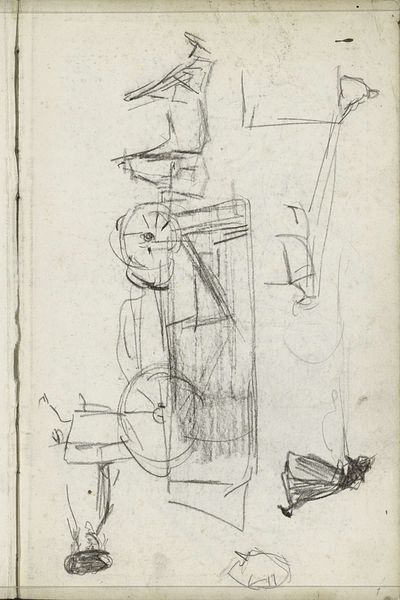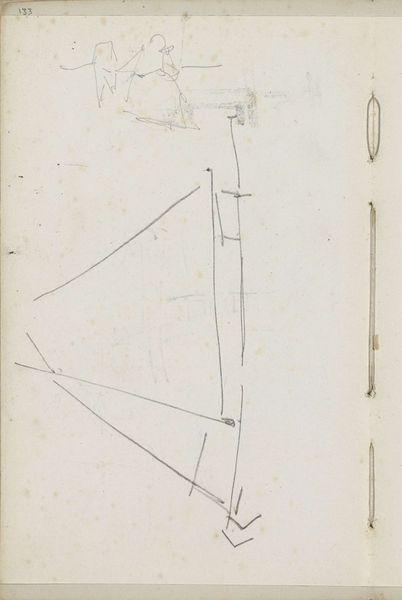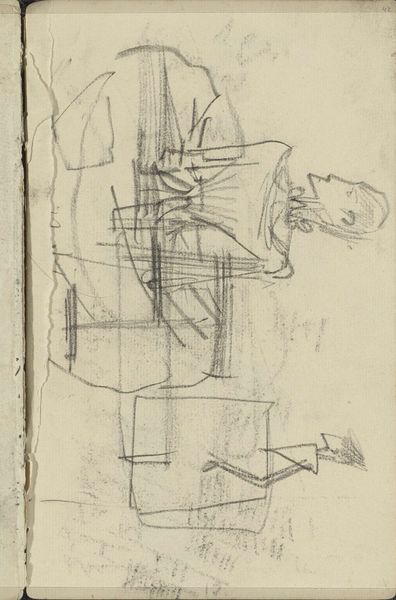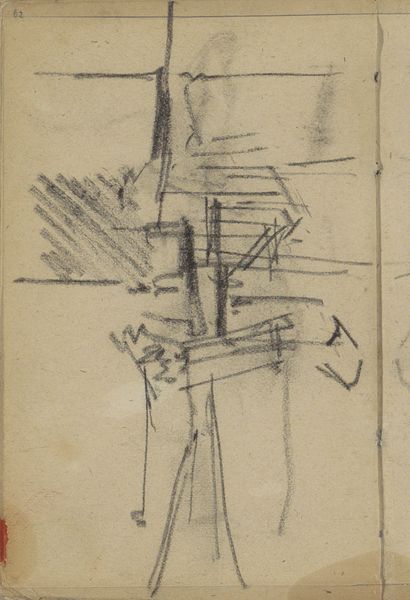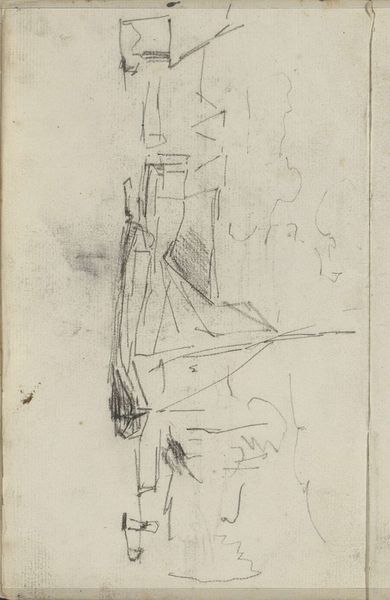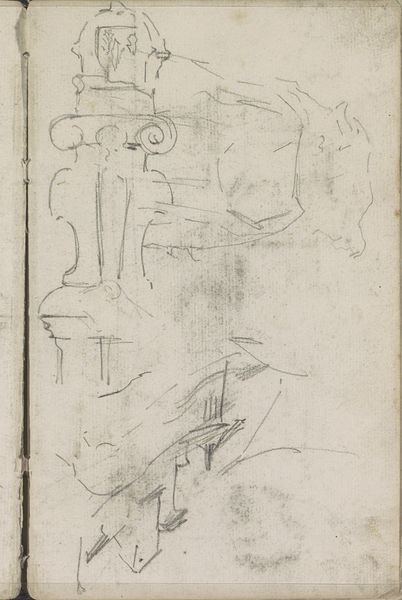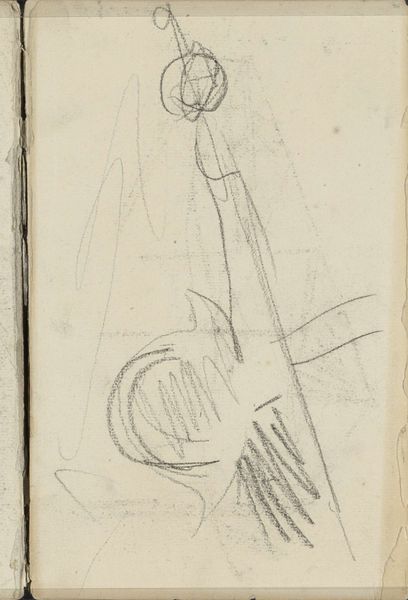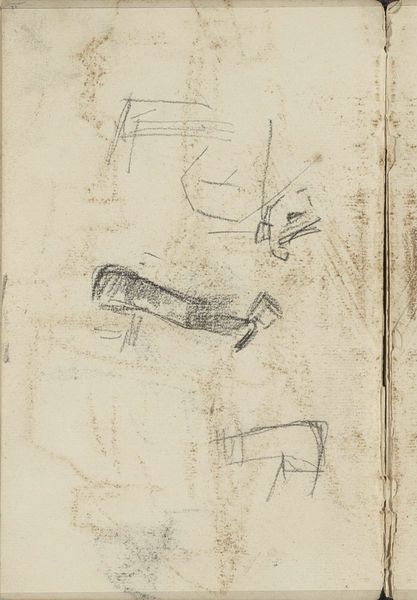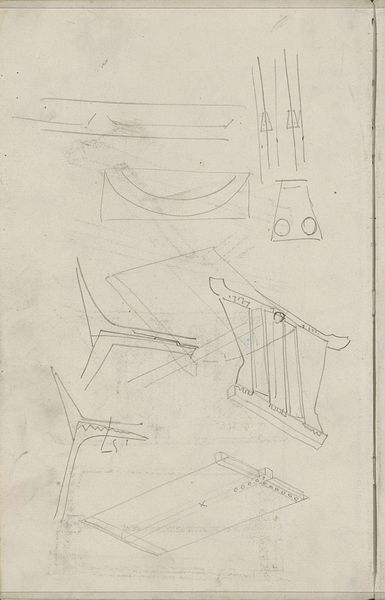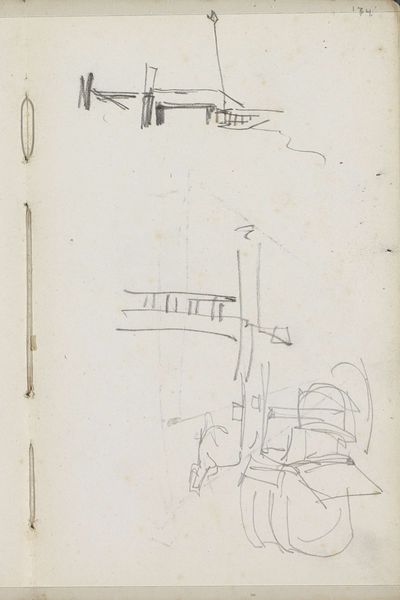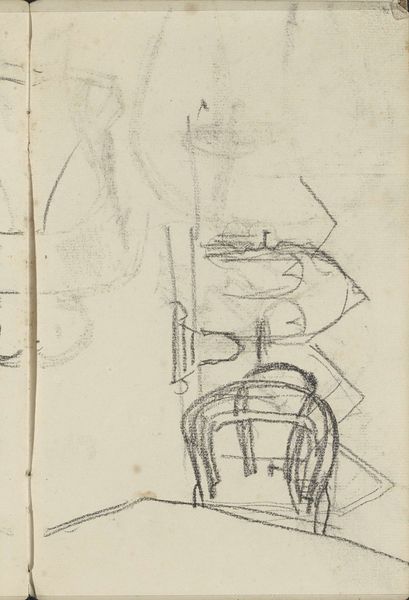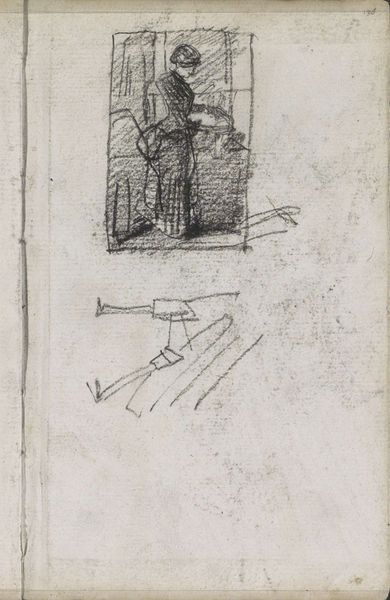
drawing, paper, pencil
#
drawing
#
amateur sketch
#
light pencil work
#
quirky sketch
#
incomplete sketchy
#
figuration
#
paper
#
form
#
personal sketchbook
#
idea generation sketch
#
sketchwork
#
intimism
#
pencil
#
line
#
symbolism
#
sketchbook drawing
#
sketchbook art
#
initial sketch
Copyright: Rijks Museum: Open Domain
Curator: This drawing, simply titled "Studies," was created around 1895 by Carel Adolph Lion Cachet and resides here at the Rijksmuseum. It's rendered in pencil on paper. What's your immediate take? Editor: It strikes me as tentative, like peering into the artist's private thought process. It feels intimate and almost secretive, a glimpse into works not yet realized. Curator: Precisely. Considering the period and Cachet's larger artistic output—often delving into symbolism—this sketch gives us valuable insight. Think of the Symbolist movement’s engagement with the subconscious and the exploration of interior states. Editor: You can see the Symbolist aesthetic in the unfinished nature of the drawings. Do you see it as a push against the dominant academic artistic establishments? Curator: Absolutely. Artists like Cachet were part of a wider socio-political shift towards individualized expression. Symbolism, as a counter-narrative, granted artists the power to investigate taboo issues, questioning traditional artistic expression, while giving insight to ideas surrounding colonialism and capitalism. Editor: But, does its unfinished quality speak to the larger discourse surrounding what constitutes ‘finished’ art within particular institutions? It’s now preserved within one! What social structures are at work there? Curator: An astute observation. Institutions play a key role. In exhibiting this preliminary work, museums invite audiences to reconsider conventional understandings. They shape cultural acceptance around certain forms of art production. Editor: In other words, displaying this piece reframes its worth— elevating initial artist’s notes within the institutional context? I’m curious what movements these drawings tie into regarding cultural identity, race and societal beliefs. Curator: Right, it’s a critical act that affects Cachet's reception within different social contexts. This act in itself raises questions about power, who gets to determine artistic value, and what social and artistic biases influence them. Editor: This discussion is crucial for unpacking the politics of imagery. It’s useful in thinking of how social and power relations operate in how the art world values particular practices. This art can push a lot of necessary dialogue, beyond this museum, if displayed well. Curator: Agreed. Reflecting on these "Studies," reminds us that an artwork's significance is deeply rooted in its socio-historical context, where individual, social, and institutional narratives intersect and overlap, providing an incomplete yet crucial lens on our present moment. Editor: Exactly, analyzing it forces us to address how societal norms shape interpretations. Thank you.
Comments
No comments
Be the first to comment and join the conversation on the ultimate creative platform.
